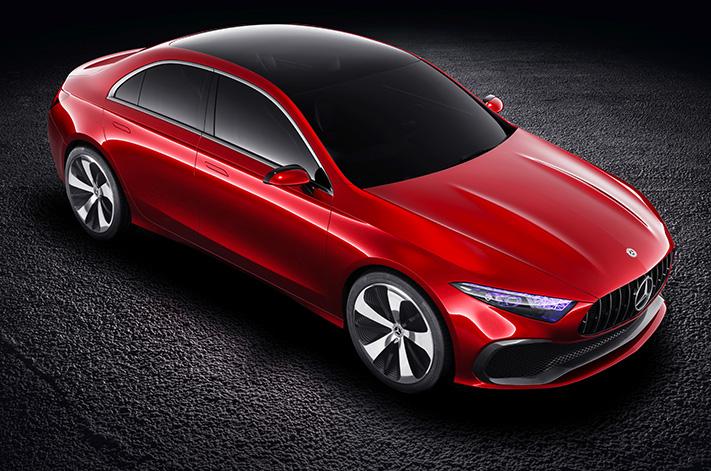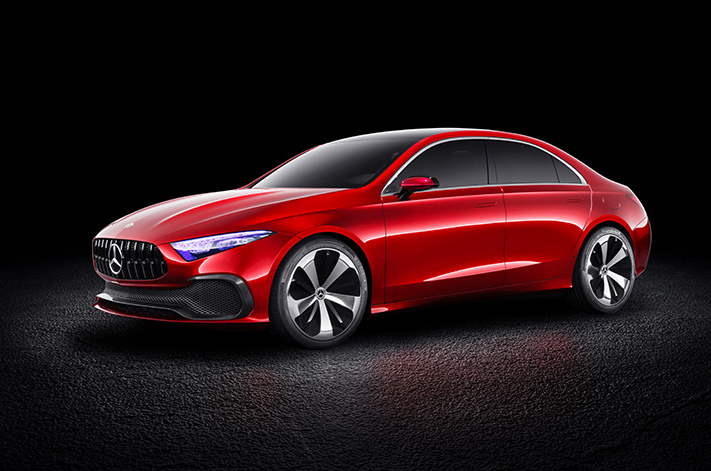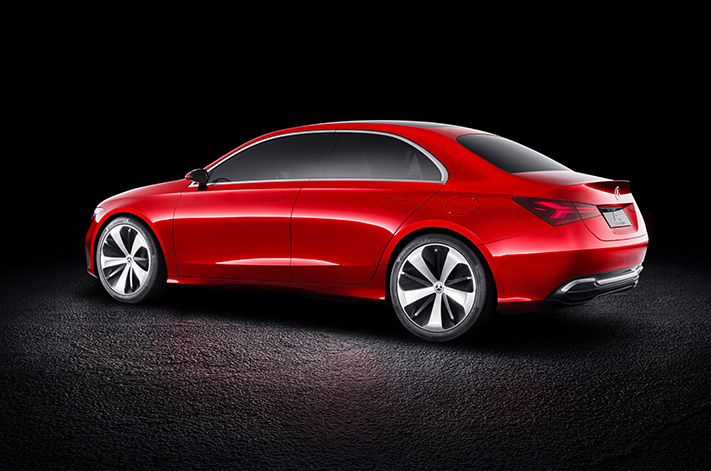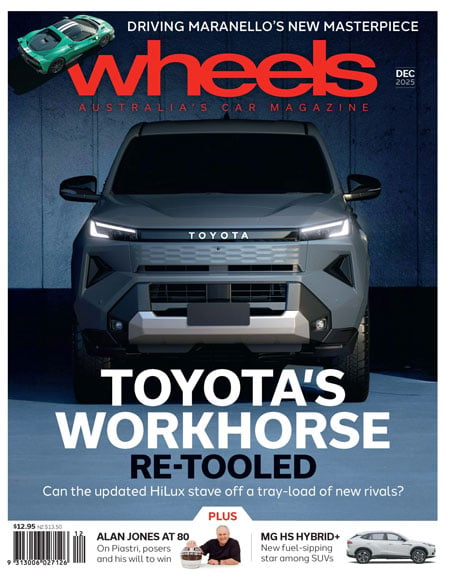MERCEDES-Benz’s new A-Class heralds a welcome, if radical, return to a clean, minimalist design that is in total contrast to the overwrought, convoluted styling of many of today’s new models.
First published in the June 2017 issue of Wheels Magazine, Australia’s most experienced and most trusted car magazine since 1953.
Revealed at the Shanghai motorshow as the A-Class Concept Sedan, the attractive new design language ignores today’s trend to ever more creases, edges and lines.

The new A-Class – expected to be launched, little changed from the A-Class Concept, in sedan and hatchback forms at next year’s Geneva show in March – introduces a tilt-forward grille to add visual length to the bonnet. Wagener denies this has an adverse impact on the new car’s aerodynamics.

Curiously, the concept car carries a so-called Panamericana grille, thought to be exclusive to AMG models.
“The racing grille with its vertical bars, is dedicated for AMG models,” confirms Wagener. “But the contours of the grille will be seen on the production models.” Meaning the successor to today’s AMG A45 will get the Panamericana grille.

“We’ve done a huge amount of work on the platform to reduce the overhangs,” agrees Wagener. “So much so that the crash length [the body’s crash protection] is now behind the [front] wheels. The design now has the DNA of rear-drive proportions and feels like a compact limousine with great design balance. Even the feeling of the 190 baby Benz. There’s now enough taper in the body that [in a three-quarter front view] the body ends when the back wheels stop.”
Surfaces are far simpler.

Wagener isn’t a fan of many of the current crop of Asian models, though he sees the Koreans as striving for cleaner designs than the Japanese.
“Really, to our European eyes, we don’t get it [Asian design]. They are successful with their different approach, but I’m pretty sure they will follow [our lead].”
The launch of an A-Class sedan doesn’t mean the end of the CLA, the four-door coupe version of the current A-Class. The new A-Class sedan is primarily for China – hence the decision to launch the concept in Shanghai – but there is also a replacement CLA in the program. Australia is expected to see the first of the new-generation A-Class models around mid-2018.

“You can camouflage bad proportions by throwing a lot of stuff on the design,” says Gorden Wagener, bringing to mind several Japanese SUVs.
“Purity is a higher form of design. The pure approach says that you should take lines out until the car is just a signature line. I tell my designers that if you like the design, take a line out. If you still really like it, take another line out. It creates a sexy and appealing vehicle that becomes balanced with a contemporary, modern and luxurious form.”
Wagener, who became Mercedes’ design boss at just 39 in 2008 and was appointed to the board in 2016, says: “Every car is finished up to 2020 and we have platforms that go out to 2035 or so.”

“As creative people we can imagine what the future can be and we can drive it,” he claims.
Wagener was born in Germany, yet says he feels very Anglo-Saxon. A graduate of London’s Royal College of Art, he worked as an exterior designer for Volkswagen, Mazda and General Motors before joining Mercedes-Benz in 1997. He spent time in California as Mercedes’ director of strategic and advanced design, before moving back to Germany in 2008 to take up his current position.





